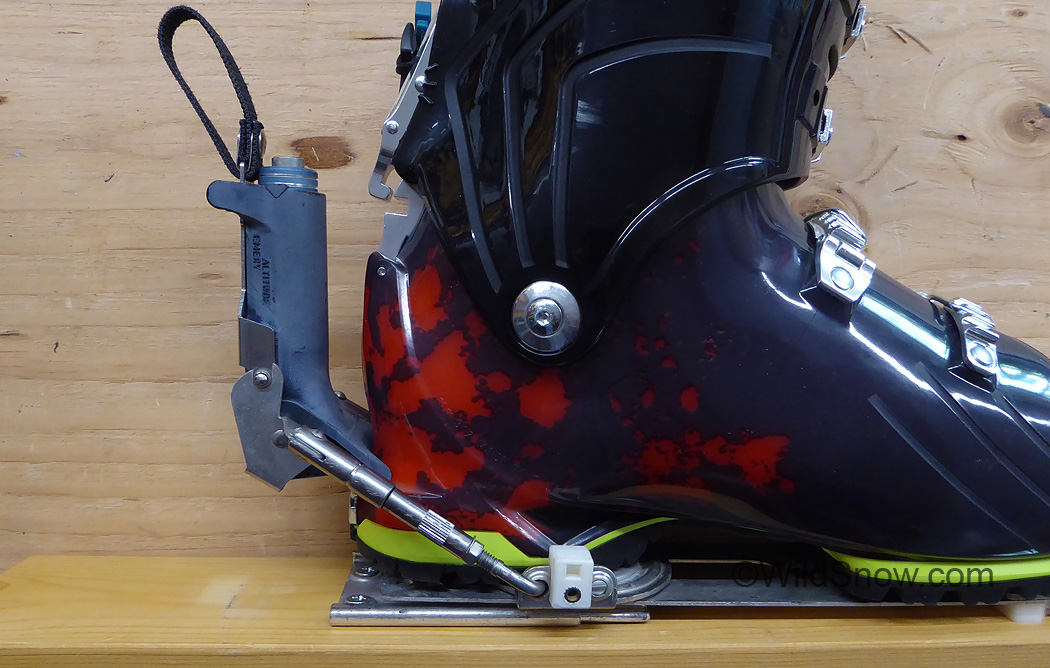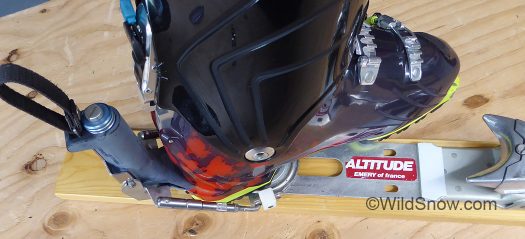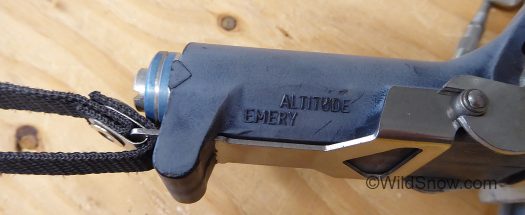The French are known for industrial design aesthetics such as the Citroen automobile, but when we think of ski touring bindings, Germanic brands such as Marker and Silvretta come to mind. French company Emery broke out of that stereotype for a lengthy run from the mid 1970s and on through the 1980s with their Emery binding series.
As far as we know, the binding covered here was the first in the “Altitude” series. While a perfunctory effort was made to save weight with the plastic housed Look Nevada heel unit (perhaps a rental version of Look’s model N57 or N77), otherwise this all metallic rig was clearly durable — but at a cost — one binding weighs fully 41.7 ounces. Later Emery bindings used much more plastic and a minimalist approach, but by most accounts were not as mechanically functional as this well conceived configuration, that used essentially an alpine toe and heel mounted on a plate.
(Readers please note, as always we could use help with accurately dating this gear, please leave comments.)
This is one of the few “antique” or “classic” touring bindings in our collection I’d still feel comfortable skiing on, provided the plastic Look Nevada heel unit housing was still strong enough.
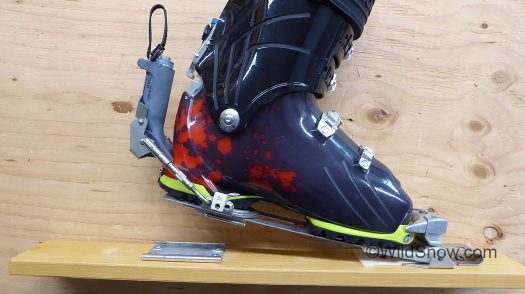
Emery Altitude in touring mode (with modern boot), late 1970s, included a Look Nevada turntable heel as state-of-art as any ski binding of the time. (My understanding is a heel lifter was available, we don’t have it).

Overhead view without boot. The Look Nevada heel unit was tied to a turntable, still a popular arrangement. The beauty of this is your boot heel is blocked from sideways pre-release by the binding frame ‘wishbone,’ but the boot can still rotate due to the turntable. While this sort of rigging does little to protect against knee injuries, it is said to be very effective at protecting against spiral leg fractures while still providing good retention characteristics. In the days of these bindings, due to skis still being ‘straight cut,’ knee ligament injuries were not as big a concern while broken bones definitely were an issue.
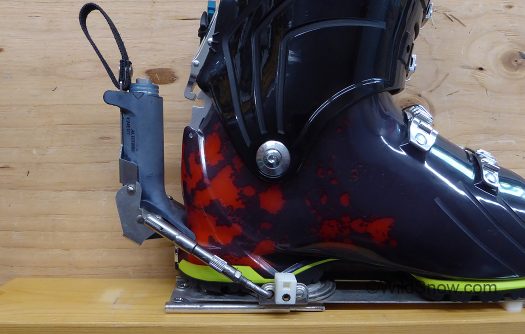
Binding heel latched down to ski for downhill mode. Look Nevada sourced binding heel appears to be a plastic housed version of the Look N77, or perhaps a repurposed rental binding. It’s quite nicely made and still functions perfectly, though I kept release tension minimal to avoid shrapnel in the event the 40 year old plastic has weakened.
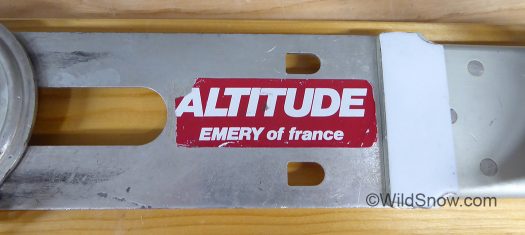
Steel plate connects heel and toe units, heavy but no doubt durability problems were probably minimal.
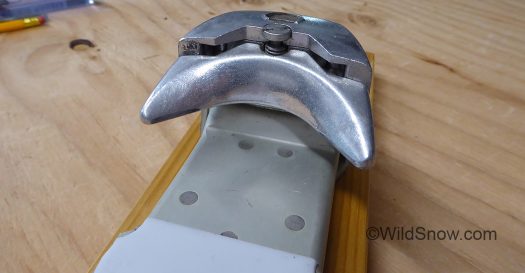
Toe unit is a basic alpine style cup with excellent height adjustment, designed to be low profile so the binding could pivot in walk mode without the toe unit hitting the ski too soon. Similar concept to the toe units on plate based touring bindings such as Marker Duke.

What appear to be HDPE anti friction plates exist both in the usual spot under boot toe, but also where the binding folds together and obviously would be prone to icing.
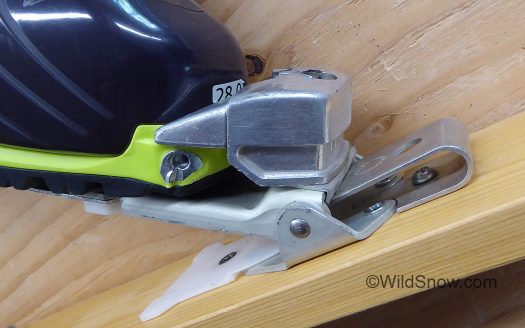
Another view of toe unit in tour mode. The funny looking metal loop at the front is actually a ‘return spring’ bumper arrangement the toe unit hits when you pivot forward at maximum angle. In the 1970s through early 1980s it was thought you needed some kind of return spring on your bindings so your skis didn’t flop around during sidestepping and that sort of thing. Wasn’t necessary.
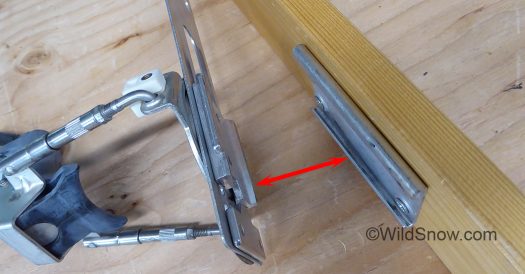
Latching down for downhill mode uses this well designed system of rails and slots. Once fixed, the ski was still free to flex due to the rails sliding in their corresponding slots. You did need to remove your ski to switch modes, but we think the simplicity and effectiveness of this system still applies to binding design around 40 years later.
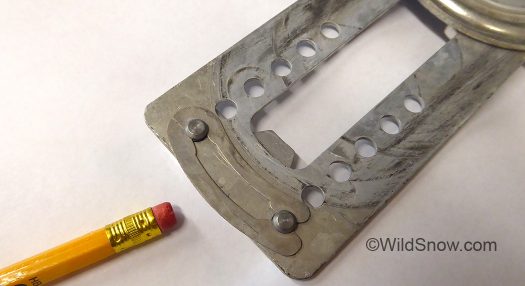
Boot length adjustment system is elegant. This simply consists of a stop block that keeps the binding heel turntable mount from moving backwards, and is adjusted by removing this circlip and matching the stop block to corresponding holes in the heel-toe connector plate.
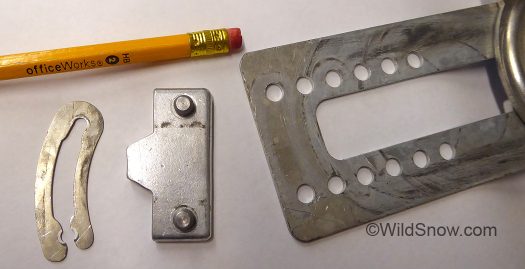
Length adjustment system taken apart, ready to re-install at correct length for boot. You could do this at a hut in the mountains if necessary, but changing length at the top of a peak in a storm would be difficult. If you broke or lost the dedicated circlip you could use two automotive style standard circlips of compatible size.
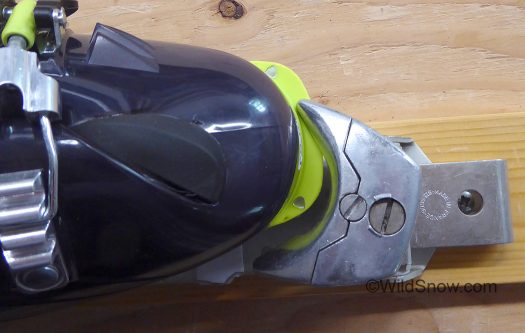
Toe release is basic, nothing fancy. Probably gave adequate retention and release to good solid skiers who didn’t ask too much of it. We’re fairly certain this shortened clearance toe was designed especially for the Altitude, and was probably quite expensive to make. It has an effective height adjustment that’s not much different than state-of-art plate touring binding of 2016 such as Salomon Guardian and Fritschi Diamir Freeride.
It’s interesting to note that while we tend to stereotype the French regarding their lingual elitism, the Look Nevada heel used on this Emery has fully American roots in its name. More info here. “Look” was a no brainer, taken from a popular magazine of the time, but one has to wonder at the name “Nevada.” Was the inventor a casino gambler, or just a fan of not paying taxes? Inquiring minds want to know…

